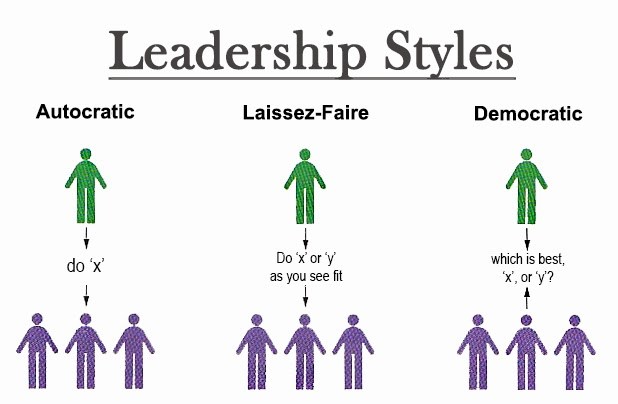The mystery of leadership - Part Two

In the first part of this series I was talking about the qualities and effectiveness of leaders:
https://steemit.com/leadership/@ksolymosi/the-mystery-of-leadership-part-one
In this post I would like to continue this journey to the mystery of leadership with leadership style... another attribute that is widely referenced when one is talking about leadership behaviour. What style is appropriate? This is also a tough question, I would also start anwering with it depends...
I would say that two factors are essential when we are talking about style: consistency or fairness and flexibility. Both will come into paly when you react to the perceived behavior of your colleagues. And this is situational: people are not showing the same and consistent behaviour all the time, but still expect fair and flexible direction from the leader. Your best performing colleague might have bad periods, when he needs more attention and empathy from you. Even your superstar can have "do-not-like"-type of tasks that he keeps procrastinating, and with these you cannot let him alone. Your frustrated and partly burnt-out colleague might have tasks he slightly enjoys, and doing these tasks he will not need the usual strict control from you...

We are not producing consistent behavior, therefore the leadership style should adapt to the perceived behavior and the actual performance of the employees as well as to the requirements of the task/work/environment. Even a relatively autocratic leadership style can be useful under special circumstances. Eg. in crisis situations: let’s imagine that as I am driving home, a fire truck overtakes with very loud sirens, going very fast and turns at the corner of our street. As I follow the truck, I see it stopping in front of my house. I also park my car and see that my house is on fire with all my valuables in it. Now, firemen get out from the truck and the officer asks them to line up in front of him and start telling them: “OK, let's discuss: who wants the lines, who goes up the ladder, etc.” It would be a disaster, right? I do not want them to be democratic at this point. I want them to save my valuables, NOW. It’s absolutely not important who does the job, as long as it is done. But after they return, it is appropriate to engage in a dialogue and discuss, what was right or wrong today. This discussion will help the team understand leadership decisions and priorities and also provides a good learning base for managing future situations.

In the classic theory of Kurt Lewin, he identifies three distinct leadership styles: democratic, autocratic and laissez-faire. All three has advantages and disadvantages in my opinion. We cannot say that for example democracy will be the one and only solution, just think of my previous example...
What is bad in democracy? It may lead to endless discussions without any piece of action. When you need to react fast, you do not have time for that! But the good thing in democracy that it empowers your colleagues and lets them be "part of the game". If your colleagues understand your principles and are able to see "the big picture", then they will be able to act without you being present all the time. They will understand the goal and the way to reach it, and they do not need your constant presence to act accordingly. Research shows that people in democratic teams or organizations have a sense of responsibility for the performance of the entire team/organization and their high performance does not drop when the leader is absent.
On the contrary excessive use of the autocratic style may kill initiation and the freedom to act. Team members working under an authoritative leadership loose interest and "forget to think" after a while. Performance obviously drops in the absence of the leader, because there is no shared vision and any idea about the goals and requirements of the leader. The leader needs to be present all the time in order to be able to keep performance levels high. Have you ever heard this from a boss? "I cannot go on holiday because life would stop here without me..." It is surely a good sign that something is going wrong...
An excessive use of the laissez-faire attitude may easily result in anarchy. A leader adapting this style will let his team members do whatever they want. He does not direct, does not give instructions, does not provide guidelines, etc. Even if he is present, it seems that he is not there at all. This can easily lead to chaos and no performance at all. This style only works for short periods and with highly cohesive teams of self-motivated and focussed team members.

You need to balance your style and adapt to the situation, this is why you need to stay flexible as a leader. Nowadays when change and constant learning is one of the major driving forces of organizations, leaders should work as cathalists and development mentors rather than authoritative and controlling entities. Being able to develop others and set motivating goals are very important leadership qualities, but in order to be able to do that, you need to stay flexible and react to even the slight changes that you notice in their behavior. The best leadership style is situational: adapted to the task and the performance of the employee as well.
If you are interested in more details, I will get back to this "situational factor" in the next part of this series.
Sources of pictures:
This post has received a 0.35 % upvote from @drotto thanks to: @banjo.
Congratulations! This post has been upvoted from the communal account, @minnowsupport, by Kriszta from the Minnow Support Project. It's a witness project run by aggroed, ausbitbank, teamsteem, theprophet0, someguy123, neoxian, followbtcnews/crimsonclad, and netuoso. The goal is to help Steemit grow by supporting Minnows and creating a social network. Please find us in the Peace, Abundance, and Liberty Network (PALnet) Discord Channel. It's a completely public and open space to all members of the Steemit community who voluntarily choose to be there.
If you would like to delegate to the Minnow Support Project you can do so by clicking on the following links: 50SP, 100SP, 250SP, 500SP, 1000SP, 5000SP. Be sure to leave at least 50SP undelegated on your account.